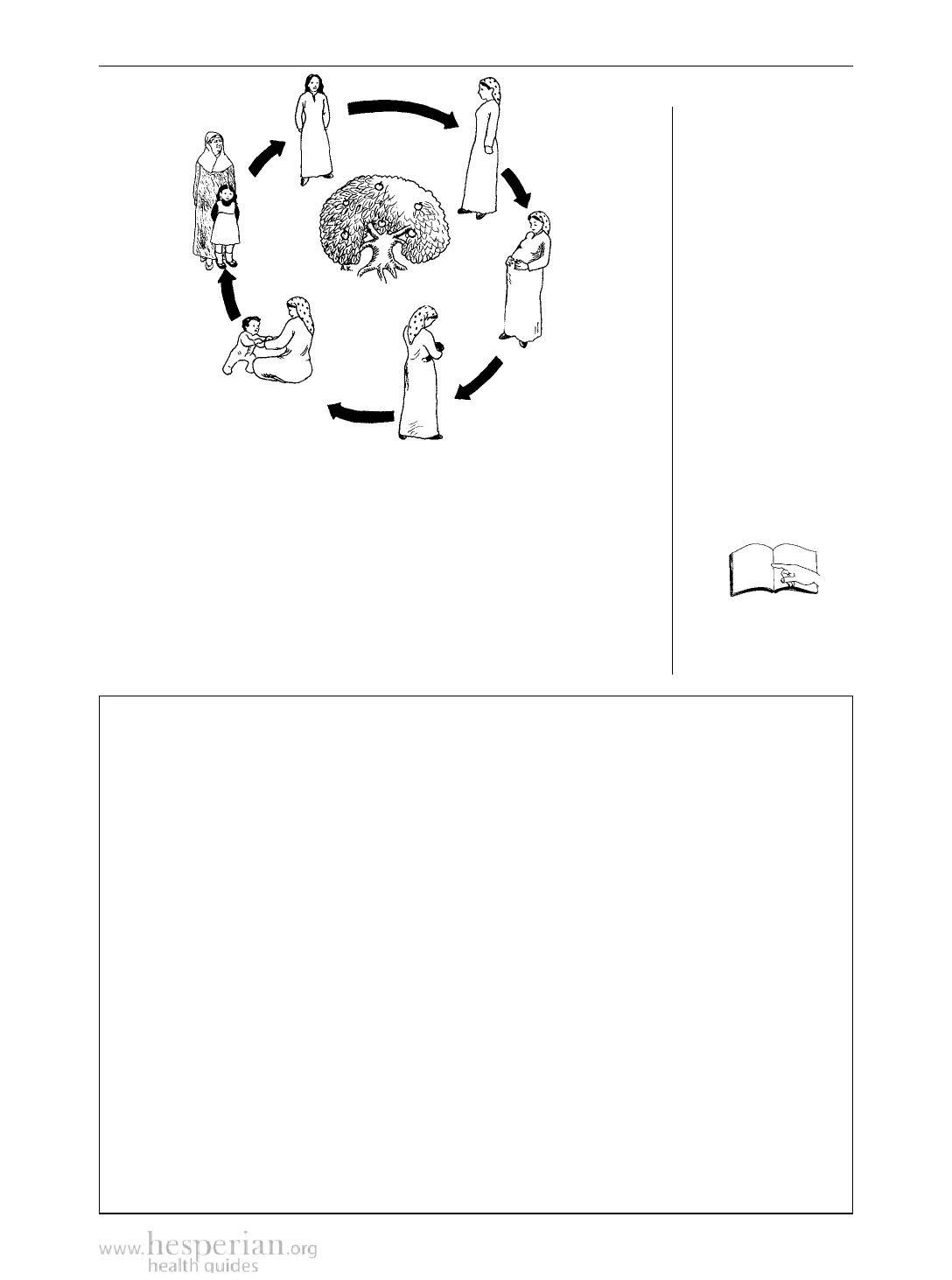
How a Woman’s Body Changes 47
How a
Woman’s
Body
Changes
The Life Cycle
A woman’s body goes though many important changes during
her life—at puberty, during pregnancy and breastfeeding, and
when she stops being able to have a baby (menopause).
In addition, during the years she can have a baby, her body
changes every month—before, during, and after the time of
her monthly bleeding. The parts of the body where many of
these changes happen are the vagina, womb, ovaries, fallopian
tubes, and the breasts, also called the reproductive system. Many
of the changes are caused by special chemicals called hormones.
puberty, 54
monthly bleeding, 48
menopause, 124
Hormones
Hormones are chemicals the body makes that control how and when the body
grows. A little while before a girl’s monthly bleeding first starts, her body begins
to produce more estrogen and progesterone, the main female hormones. These
hormones cause the changes in her body known as puberty.
During the years when she can have a baby, hormones cause a woman’s body
to prepare for possible pregnancy each month. They also tell her ovaries when to
release an egg (one egg every month). So hormones determine when a woman
can get pregnant. Many family planning methods work to prevent pregnancy by
controlling the hormones in a woman’s body (see page 207). Hormones also
cause changes during pregnancy and breastfeeding. For example, hormones keep
a pregnant woman from having her monthly bleeding, and after childbirth they also
tell the breasts to make milk.
When a woman is near the end of her reproductive years, her body slowly
stops producing estrogen and progesterone. Her ovaries stop releasing eggs, her
body stops preparing for a pregnancy, and her monthly bleeding stops forever. This
is called menopause.
The amount and kind of hormones produced by a woman’s body can also affect
her moods, sexual feelings, weight, body temperature, hunger, and bone strength.
Where Women Have No Doctor 2012